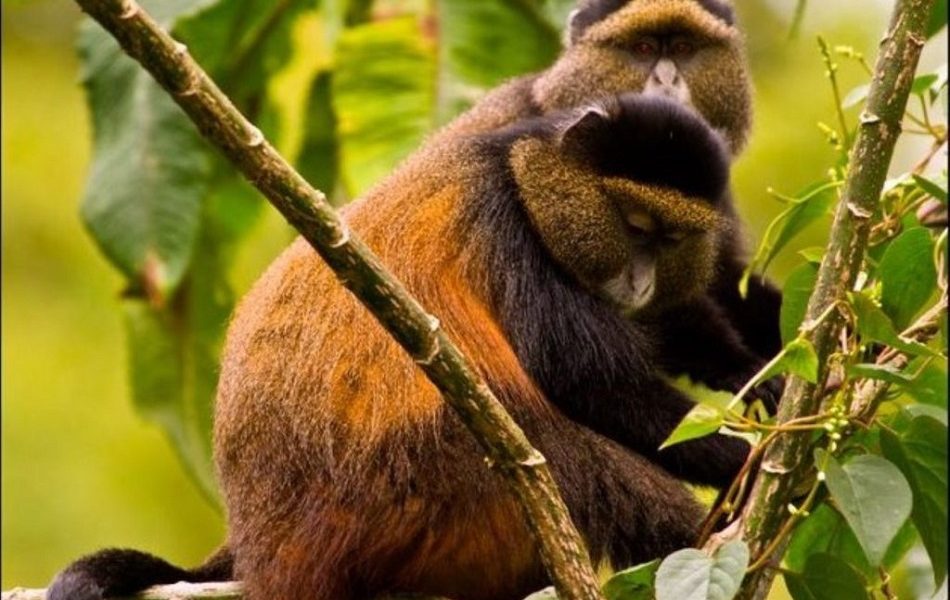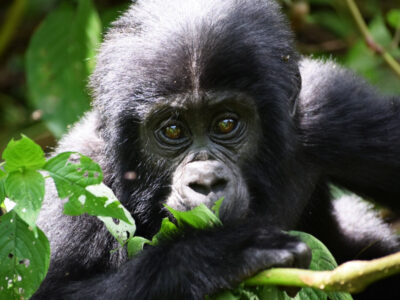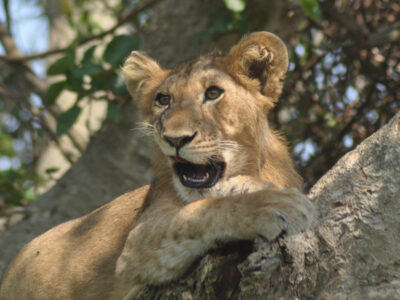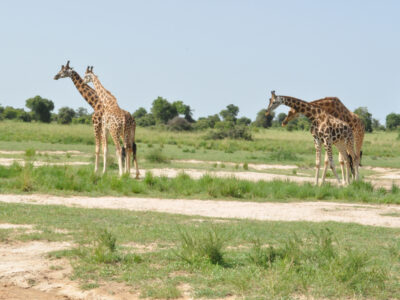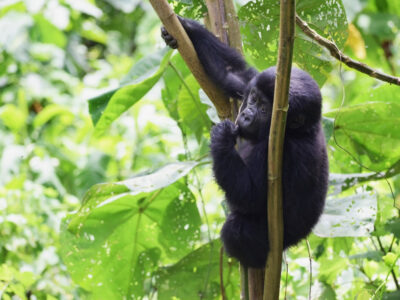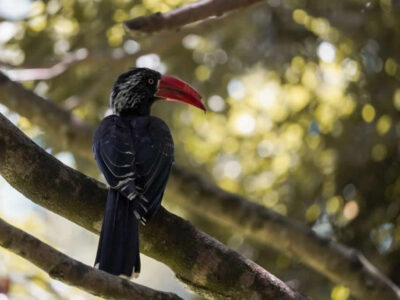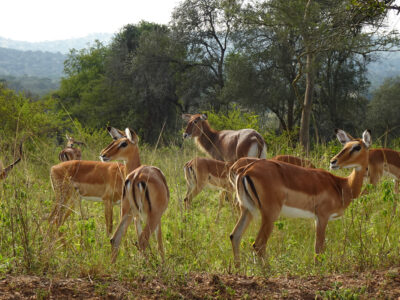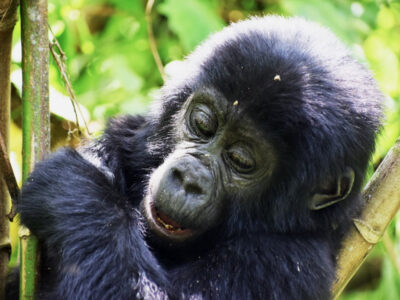A must-do activity when going on a gorilla safari in Uganda is trekking golden monkeys, an excitement that can only be had in Mgahinga Gorilla National Park in South Western Uganda. Golden monkeys may not be as well-known as mountain gorillas as primates, but they are unquestionably elusive and sociable creatures who merit tourists’ attention. The Virunga Mountains in Central Africa are the only home to these fascinating species. One of the bioregions with the most biodiversity in the world is the Virunga Region, which includes parts of Rwanda, Uganda, and the Democratic Republic of the Congo.
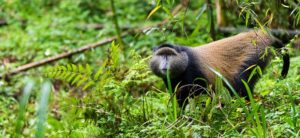
Tourists that visit Uganda can only monitor these primates in the less well-known Mgahinga National Park. They number between 3000 and 4000 and reside in the Virunga massif. Tracking the golden monkeys is an activity that you should not pass up, even if there are only 40–60 habituated golden monkeys in Uganda’s Mgahinga National Park. Other golden monkey species can be tracked in Volcanoes national park. The most precious habitat for these endangered species is the bamboo forests of Mgahinga National Park.
Trekking golden monkeys isn’t as well-known as tracking mountain gorillas, but it’s still an exhilarating adventure tour you may have on the African continent. These adorable primates are often in trees! Since they are accustomed to tourist visits, they are not afraid of people entering their territory. Tourists that walk to the park’s high peaks to witness these intriguing animals in their native habitat can never get tired of meeting these amusing primates. In Mgahinga National Park, you can go on a Uganda tour that combines mountain hiking and encounters with golden monkeys.
Unique traits and information about golden monkeys
Golden monkeys are considered to be ancient monkeys! These primates are known as “Golden Monkeys” because of the conspicuous golden fur that covers their body. They stand out strangely yet intriguingly from other wild primates thanks to their golden-orange patch that extends from their long tail to their back and cheeks and some darker patches on their legs, arms, and face. They are a subspecies of blue monkeys that live on the Virunga Mountains’ lower slopes, where bamboo forests predominate.
Like mountain gorillas, golden monkeys do not veer off too far up the slopes; instead, they spend a lot of time among the bamboo closer to the mountains’ base. They travel in large groups, collecting shoots from the tops of the bamboo canopies while, curiously, also descending to the ground.
These intriguing creatures live in 30 to 80-member groups that are often led by one adult male. The male is typically the one that defends the territory in animal families. In contrast, in these primates, the female is responsible for protecting the territory while the males initially remain with the group before moving on to join another.
Herbivores are golden monkeys. They consume 20–30 species of plants, primarily bamboo shoots, but they also occasionally eat fruits, leaves, and some invertebrates that live on leaves because they are physiologically programmed to do so. Golden monkeys eat a lot of fruit when wild fruits are in season, but once the season is past, they switch to the always-present bamboo.
The group’s male monkey mates with every female, much like the majority of wild animals do. Surprisingly, the females are the ones that start this highly advanced mating ritual. The child is born with fur and wide-open eyes after a five-month gestation period. Before the baby is granted any freedom, the mother cares for it for roughly two years.
A golden monkey’s lifespan can reach 19 years. Male monkeys are slightly smaller than females, measuring between 46 and 53 centimeters for females and 48 to 67 cm for males. Males can weigh up to 7 kg, while females can reach weights of up to 3.5 to 4.5 kg.
They are indigenous creatures. They are confined to one place because they are endemic. They travel between the wet and sunny seasons, living in regions where there is a lot of fruit and bamboo. When it rains, the bamboo grows up and around, making it easier for golden monkeys to build homes close to a plentiful food source. Some of them relocate to other mountains during the dry season when there is less bamboo in quest of fruits and other food plants.
Similar to humans, golden monkeys construct their own habitats by braiding bamboo together to make a house. Every day, they will eat enough to migrate back to their habitat. In that particular perspective, you could say they are domestic.
As a whole, golden monkeys are exceedingly frisky and beautiful to look at. Most tourists who travel to Uganda to see golden monkeys combine their Uganda tours with safaris that include wildlife viewing and gorilla tracking. The trip requirements for persons who are captivated by primates typically include seeing chimpanzees, gorillas, golden monkeys, and other small primate species including baboons, colobus monkeys, and L’ Hoest monkeys among others.
Travelers For a longer trip to Uganda should look at our 8 days Uganda tour that includes a primate and wildlife safari, or if you’re having less time in Uganda and yet interested in tracking golden monkeys, check out our 4-day golden monkey tours in Mgahinga National Park, we can customize your tour schedule to suit your tastes.
Tracking Golden Monkeys in Mgahinga National Park
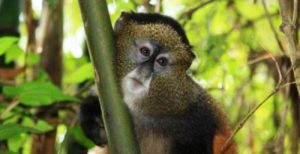
In Mgahinga National Park, there is one habituated golden monkey troop that can be seen by visitors and researchers alike. You need permission from the Uganda Wildlife Authority in order to observe these beautiful critters. For single trekking inside the Mgahinga national park, these licenses cost USD 90.
Permits for tracking golden monkeys can be obtained from the Uganda Wildlife Authority in Kampala or the park’s administrative center in Kisoro Town. Since golden monkey permits may be acquired in the park offices on the day of trekking, there is no need to rush and panic when obtaining them. Other nearby Volcanoes National Park and Virunga National Park offer the chance to view golden monkeys; however, Virunga National Park in the Democratic Republic of the Congo is not yet safe for visitors.

